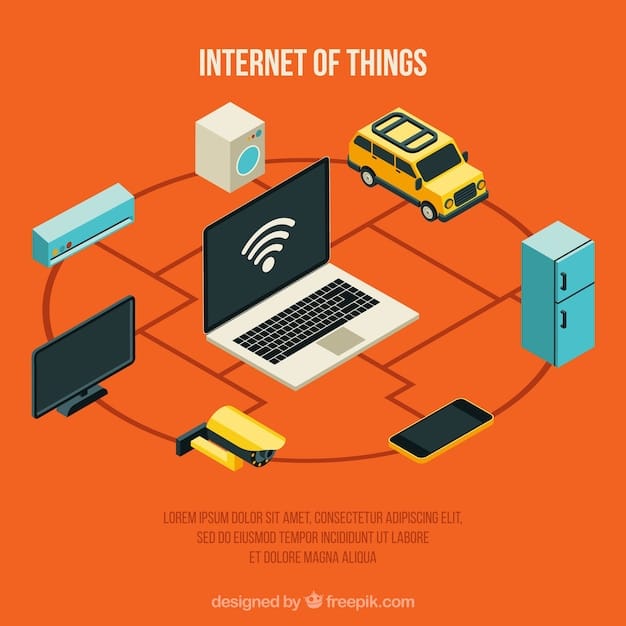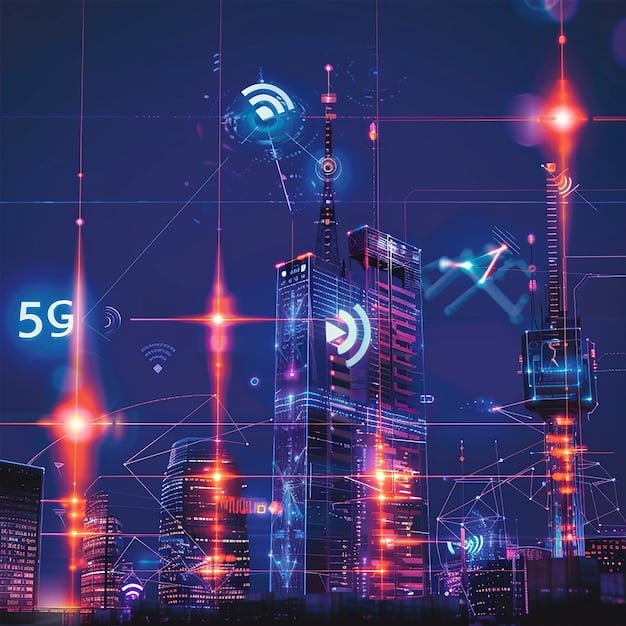How Wi-Fi 7 Will Eliminate Cloud Gaming Lag in 2025

How will Wi-Fi 7 impact cloud gaming latency in 2025? The introduction of Wi-Fi 7 promises significantly reduced latency thanks to its advanced features like Multi-Link Operation and improved bandwidth, offering a smoother and more responsive cloud gaming experience.
Are you dreaming of a cloud gaming experience that’s as smooth as playing on a local console? The future might be closer than you think. How will Wi-Fi 7 impact cloud gaming latency in 2025? This new generation of Wi-Fi technology is poised to revolutionize how we game, especially when it comes to cloud gaming. Let’s dive into the exciting possibilities.
Imagine playing your favorite AAA titles on any device, anywhere, with virtually no lag. With faster speeds and lower latency, Wi-Fi 7 could make this a reality . The promise is tantalizing, but what exactly makes Wi-Fi 7 so special?
Understanding Wi-Fi 7 and Its Key Features
Wi-Fi 7, also known as IEEE 802.11be, is the latest evolution in Wi-Fi technology. It builds upon the foundation laid by Wi-Fi 6 and 6E, introducing several key improvements designed to deliver faster speeds, lower latency, and increased network capacity. These advancements are not just incremental; they represent a significant leap forward in wireless communication. Let’s explore the features of Wi-Fi 7 that makes it a game-changer for cloud gaming.
The Promise of Faster Speeds
One of the most anticipated features of Wi-Fi 7 is its increased data transfer rates. Wi-Fi 7 supports a maximum theoretical throughput of up to 46 Gbps, a significant jump from Wi-Fi 6’s 9.6 Gbps. This massive bandwidth increase will minimize bottlenecks and ensure that data-intensive applications, like cloud gaming, receive the necessary bandwidth for a high-quality experience.
Multi-Link Operation (MLO) Explained
Multi-Link Operation (MLO) is another cornerstone feature of Wi-Fi 7. MLO allows devices to simultaneously connect to multiple frequency bands (2.4 GHz, 5 GHz, and 6 GHz). By utilizing multiple bands concurrently, Wi-Fi 7 devices can aggregate bandwidth, reduce congestion, and ensure a more stable and reliable connection. This is particularly crucial for cloud gaming, ensuring your inputs are registered instantly on the server so that how will Wi-Fi 7 impact cloud gaming latency in 2025 becomes clearer.
The Role of 4096-QAM
Wi-Fi 7 employs 4096-QAM (Quadrature Amplitude Modulation), which significantly increases the amount of data transmitted per signal. Compared to Wi-Fi 6’s 1024-QAM, 4096-QAM allows for a 20% increase in data rates at the same bandwidth. This feature means your favorite games can stream smoother and react faster to your inputs.
- Increased data rates: Enjoy faster download and upload speeds.
- Reduced latency: Experience near-instantaneous response times.
- Improved reliability: Maintain a stable connection even in crowded networks.
In essence, Wi-Fi 7 is engineered to provide a smoother, more responsive, and more reliable wireless experience. These features collectively address many challenges in cloud gaming, paving the way for a future where geographical location and hardware limitations become less relevant.
How Will Wi-Fi 7 Impact Cloud Gaming Latency in 2025?
The arrival of Wi-Fi 7 promises to transform cloud gaming, especially when considering the question: how will Wi-Fi 7 impact cloud gaming latency in 2025?. By significantly reducing latency, Wi-Fi 7 addresses one of the most critical pain points in cloud gaming, bringing it closer to the seamless experience of local gaming. Let’s examine the specific ways Wi-Fi 7 is set to enhance cloud gaming.
Latency Reduction: The Key to Cloud Gaming
Latency, or the delay between an action and its corresponding response, is a critical factor in the quality of any gaming experience. High latency can result in noticeable lag, making games feel unresponsive and hindering player performance. This is especially true for games requiring quick reflexes and precise timing, like first-person shooters or fighting games. Wi-Fi 7 fundamentally addresses these issues.
The Benefits of MLO for Cloud Gaming Latency Reduction
Multi-Link Operation is particularly beneficial for lowering the lag, allowing devices to dynamically switch between frequency bands to avoid interference and congestion. So, how will Wi-Fi 7 impact cloud gaming latency in 2025? In cloud gaming, where data must travel between the player’s device and remote servers, MLO ensures a more stable and efficient connection, reducing the chances of lag spikes and disconnections.
Enhanced Responsiveness and Real-Time Interaction
With lower latency, cloud gaming becomes more responsive, allowing players to interact with the game in real-time. Actions performed on the client-side are quickly relayed to the server and back, resulting in a more fluid and immersive experience. This enables players to enjoy games that were previously unplayable via the cloud due to latency constraints.

- Improved accuracy: Precise inputs translate to immediate in-game actions.
- Competitive edge: Gain a competitive advantage with reduced lag.
- Immersive experiences: Enjoy seamless and engaging gameplay.
The improvements offered by Wi-Fi 7 directly address the core issues of cloud gaming, paving the way for a more accessible and enjoyable gaming experience. Lower lag translates to improved responsiveness, which can significantly impact how enjoyable an experience is.
Comparing Wi-Fi 6/6E to Wi-Fi 7 for Cloud Gaming
To fully understand the transformative potential of Wi-Fi 7, it’s essential to compare it with its predecessors, Wi-Fi 6 and Wi-Fi 6E. While Wi-Fi 6 and 6E have certainly improved the wireless landscape, Wi-Fi 7 brings significant enhancements that are particularly beneficial for cloud gaming. Let’s outline the key differences and improvements.
Data Transfer Rates and Bandwidth
Wi-Fi 6 offers a maximum theoretical throughput of 9.6 Gbps, while Wi-Fi 7 significantly ups the ante with up to 46 Gbps. This increase in bandwidth is vital for cloud gaming, which requires a constant stream of data to deliver high-resolution graphics and low-latency gameplay. The additional bandwidth provided by Wi-Fi 7 ensures smoother streaming and faster response times.
Multi-Link Operation: A New Paradigm
Let’s not forget about how Wi-Fi 7 is expected to transform cloud gaming by 2025. While Wi-Fi 6 and 6E operate on single-link connections, Wi-Fi 7 introduces Multi-Link Operation (MLO), allowing devices to connect to multiple frequency bands simultaneously. This feature reduces congestion and ensures a more stable and reliable connection, directly addressing the latency challenges in cloud gaming.
Efficiency in Congested Environments
Wi-Fi 7 also improves efficiency in crowded wireless environments. MLO and other technological improvements help Wi-Fi 7-enabled devices perform better than Wi-Fi 6/6E in challenging network conditions. This is crucial for gamers in urban environments or shared living spaces where numerous devices compete for bandwidth. The enhancements will directly influence how will Wi-Fi 7 impact cloud gaming latency in 2025.
- Enhanced speed: Experience faster data transfer rates.
- Improved reliability: Enjoy a more stable and consistent connection.
- Lower latency: Benefit from reduced lag and improved responsiveness.
Wi-Fi 7 offers substantial improvements over its predecessors, making it a superior choice for cloud gaming. By increasing data transfer rates, introducing MLO, and improving efficiency in congested networks, it provides a significantly enhanced gaming experience.
Potential Challenges and Mitigation Strategies
While Wi-Fi 7 holds immense promise for cloud gaming, it’s important to acknowledge potential challenges and discuss strategies to mitigate them. These challenges range from adoption rates to hardware requirements to security concerns. By addressing these issues proactively, we can ensure a smoother transition to this next-generation technology.
Adoption Rate and Infrastructure Upgrade
One of the primary challenges is the adoption rate of Wi-Fi 7. For cloud gaming to benefit fully from Wi-Fi 7, both client devices and network infrastructure must support the new standard. This requires widespread upgrades of routers, access points, and gaming devices.
Cost Considerations for Wi-Fi 7
The cost of upgrading to Wi-Fi 7-compatible hardware may be a barrier for some users. Early adopters may face higher prices for routers and devices that support the new standard, which may slow the adoption process. As demand increases and production costs decrease, prices are expected to become more competitive.
Security Concerns and Safeguards
As with any new technology, security is a concern. Wi-Fi 7 introduces new security protocols to protect against potential threats, but it’s crucial for manufacturers and users to implement these safeguards properly. Regular firmware updates and strong password practices are essential to maintain a secure network environment.

- Early adoption incentives: Offering discounts and promotions to encourage early upgrades.
- Infrastructure investment: Prioritizing investment in public Wi-Fi infrastructure to support Wi-Fi 7.
- Security awareness: Educating users on the importance of strong security practices and firmware updates.
Addressing these challenges proactively can pave the way for a smoother and more widespread adoption of Wi-Fi 7. While concerns are present, these advancements will continue influencing how will Wi-Fi 7 impact cloud gaming latency in 2025.
The Future of Cloud Gaming with Wi-Fi 7
Looking ahead to 2025, the future of cloud gaming with Wi-Fi 7 looks incredibly promising. With its faster speeds, lower latency, and improved reliability, Wi-Fi 7 is poised to unlock new possibilities for gamers and developers alike. Imagine playing graphically intensive games without the need for expensive gaming hardware, or accessing your favorite titles on any device, anywhere, with virtually no lag.
New Gaming Experiences and Possibilities
Wi-Fi 7 will enable entirely new gaming experiences that were previously impossible due to technological limitations. Cloud gaming will support more immersive virtual reality (VR) and augmented reality (AR) games, where low latency is crucial for a seamless and realistic experience. These advancements will address how will Wi-Fi 7 impact cloud gaming latency in 2025 in a noticeable way.
The Democratization of Gaming
Cloud gaming powered by Wi-Fi 7 has the potential to democratize gaming, making it more accessible to a broader audience. Players will no longer need to invest in expensive gaming consoles or PCs to enjoy high-quality gaming experiences; all they’ll need is a compatible device and a stable Wi-Fi connection.
The Publisher Perspective
As cloud gaming grows in popularity, game developers will have new opportunities to reach players and monetize their content. Cloud gaming platforms can offer subscription-based services, allowing players to access a library of games for a monthly fee. This model can create a more sustainable revenue stream for developers and publishers.
| Key Point | Brief Description |
|---|---|
| 🚀 Speed Boost | Wi-Fi 7 offers significantly faster data transfer rates. |
| 📶 Multi-Link Operation | MLO ensures more stable connections. |
| 🎮 Low Latency | Reduced latency enhances real-time interaction. |
Frequently Asked Questions
Wi-Fi 7 offers a maximum theoretical throughput of up to 46 Gbps, significantly faster than Wi-Fi 6’s 9.6 Gbps. This means faster download speeds and more responsive gaming experiences.
MLO allows devices to connect to multiple frequency bands simultaneously, reducing congestion and ensuring a more stable connection. This can reduce lag spikes and improve cloud gaming performance.
Wi-Fi 7 will reduce cloud gaming lag by enhancing data transfer rates and improving network reliability. Gamers can expect faster and more responsive gameplay.
Yes, to take advantage of Wi-Fi 7, you’ll need devices that support the new standard, including routers and gaming devices. While the cost might be high, over time the price is expected to decrease.
Wi-Fi 7 introduces security protocols to protect against threats, but it’s crucial for users to implement safeguards. Regular firmware updates and strong passwords are essential components of that process.
Conclusion
In conclusion, how will Wi-Fi 7 impact cloud gaming latency in 2025? The introduction of Wi-Fi 7 promises faster speeds, lower latency, and improved reliability, revolutionizing cloud gaming and unlocking new gaming experiences. While challenges exist, the benefits of Wi-Fi 7 for cloud gaming are undeniable.
As adoption rates increase and infrastructure improves, Wi-Fi 7 will transform how we game, making high-quality gaming experiences accessible to everyone, regardless of their location or hardware.





